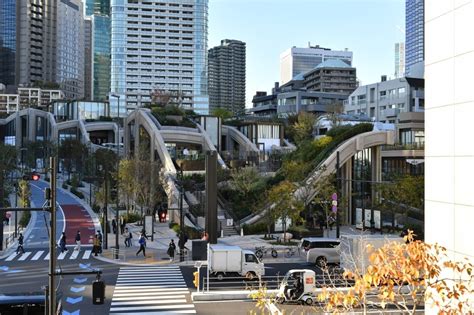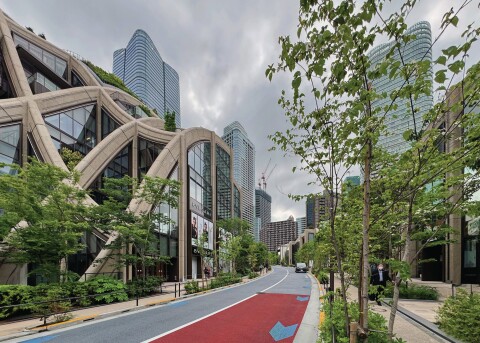Space Exploration Technologies Corp, commonly known as SpaceX, is transforming the landscape of technology and exploration. Known for pioneering reusable rockets and advancing space travel, SpaceX’s innovations are pushing the boundaries of urban and space exploration alike. This article delves into the remarkable technologies developed by SpaceX and their surprising applications beyond outer space, including their influence on urban development and sustainability. As cities worldwide face challenges in efficiency and environmental impact, SpaceX’s commitment to sustainable and high-tech solutions offers insights into the future of urban exploration, inspiring new possibilities for cities on Earth and potential habitats beyond our planet.
Let’s investigate this topic extensively with ritarblog.com
1. Introduction to Space Exploration Technologies Corp (SpaceX)
Space Exploration Technologies Corp., better known as SpaceX, is an American aerospace manufacturer and space transportation company founded by Elon Musk in 2002. Initially established with the ambitious goal of making space travel affordable and accessible, SpaceX has rapidly become one of the most innovative companies in the field. By revolutionizing technology for both space and Earth-bound applications, SpaceX has drastically reduced the cost of space travel. Its development of reusable rockets, such as the Falcon 9, and breakthroughs in spacecraft, like the Dragon capsule, have set new standards in the industry.
SpaceX’s dedication to sustainability and efficiency in space exploration is revolutionizing our perception of technological progress. While its innovations primarily target space travel, many hold significant potential for urban applications. By prioritizing reusability and sustainability, SpaceX has developed systems and processes that could inform advancements in urban infrastructure, energy, and transportation. As SpaceX continues to push the boundaries of technological innovation, its contributions promise to impact not only our approach to space exploration but also the future of our urban landscapes.

2. Technological Innovations and Their Impact
SpaceX has spearheaded numerous technological advancements that have revolutionized space exploration and influenced technological standards across a wide range of industries. One of their most significant achievements is the development of reusable rockets, exemplified by the Falcon 9. This innovation has dramatically decreased the cost of launching payloads into space, making space missions more affordable and attainable. The reuse of rocket components not only reduces expenses but also promotes sustainability, a vital concern as industries strive to minimize their environmental footprint.
A crucial innovation is SpaceX’s Dragon spacecraft, the first commercial vehicle to deliver cargo to the International Space Station. Its versatility, capable of transporting both cargo and crew, exemplifies SpaceX’s dedication to progressing human spaceflight. Moreover, the company’s Starship project aspires to enable interplanetary travel, representing a groundbreaking leap toward colonizing Mars.
These technological advancements reach far beyond space, influencing industries like urban transportation, energy efficiency, and sustainable practices. As SpaceX continues to refine its technologies, the potential for these innovations to impact urban infrastructure, logistics, and sustainable development becomes increasingly clear, forging a connection between space exploration and daily life on Earth.

3. Urban Exploration and SpaceX
SpaceX’s technological breakthroughs are igniting new possibilities for urban exploration by establishing a standard for efficiency, sustainability, and high-tech solutions. While primarily focused on space travel, SpaceX’s innovations offer valuable insights applicable to urban challenges. For example, the company’s reusable rocket technology highlights the importance of reusability in transportation systems, potentially inspiring more sustainable public transit models and infrastructure design in cities. The concept of reusing valuable materials and minimizing waste aligns with current initiatives in numerous urban centers to establish circular economies.
SpaceX’s missions demand meticulous engineering and sophisticated energy management, skills that have direct applications in urban environments. These parallels are particularly evident in the pursuit of energy-efficient construction and resource optimization. The cutting-edge propulsion and energy systems developed by SpaceX hold promise for transforming urban power grids, enhancing their resilience and adaptability to accommodate the rising energy demands of growing populations.
SpaceX’s advanced technologies foster a culture of innovation that inspires cities to embrace cutting-edge solutions like automation and smart infrastructure. By integrating these technologies into urban planning, SpaceX promotes sustainable growth, aligning with the broader goal of building smarter, more efficient cities that meet the needs of future generations.

4. Sustainable Practices and SpaceX
SpaceX has demonstrated a strong commitment to sustainability, setting new benchmarks relevant to both space exploration and urban development. This commitment is driven by the design and implementation of reusable rocket technology. By developing rockets like the Falcon 9 and Starship, capable of multiple launches, SpaceX has significantly reduced the waste typically generated by space missions. This reusable approach not only lowers the cost of space travel but also minimizes environmental impact, offering a model for sustainable practices across various industries.
SpaceX, beyond its pursuit of reusable rockets, is actively pursuing clean energy solutions for its operations. Solar power systems are being installed at multiple facilities, while efforts to mitigate the company’s carbon footprint include efficient energy use and sustainable building designs. This focus on renewable energy reflects the global push to reduce fossil fuel reliance, a challenge also faced by urban centers striving for greener power sources.
SpaceX’s dedication to sustainability offers a blueprint for cities striving to embrace eco-friendly infrastructure. By adopting SpaceX’s energy-efficient systems, urban areas can minimize their environmental footprint while accelerating the transition to renewable energy sources. SpaceX’s sustainable practices demonstrate how cutting-edge, resource-conscious solutions can not only propel space exploration but also shape the development of sustainable, resilient urban environments on Earth.
5. Future Prospects and Urban Exploration
SpaceX’s technological advancements hold immense promise for the future of urban exploration and development. As the company continues to refine its reusable rockets, autonomous systems, and energy-efficient designs, these innovations have the potential to inspire advancements in urban infrastructure, addressing the challenges posed by rapidly growing cities. For example, the concepts behind autonomous spacecraft navigation could significantly influence future urban transportation systems, leading to more efficient and safer autonomous vehicles in congested metropolitan areas.
SpaceX’s advancements in renewable energy solutions offer a glimpse into the future of urban energy grids. With the increasing demand for sustainable power sources, cities may turn to SpaceX’s innovations, such as solar installations and energy storage solutions, as examples for building more resilient and environmentally friendly urban power systems.
Furthermore, SpaceX’s ambition of establishing colonies in space, particularly on Mars, presents a unique opportunity to test and refine self-sustaining habitats. The technologies developed for supporting life on other planets – encompassing efficient resource recycling and robust habitat design – could potentially find applications in urban planning, providing solutions to sustainability issues in Earth’s densely populated regions.
6. Conclusion and Implications for Urban Exploration
SpaceX’s impact stretches far beyond space exploration, influencing sustainable practices, technological advancements, and innovative solutions to urban challenges. The company’s pioneering reusable rockets introduce a sustainable model by reducing waste and setting a precedent for industries worldwide. This inspires cities to consider more sustainable transportation and infrastructure options. Moreover, SpaceX’s innovations in energy efficiency and renewable power sources highlight the potential for urban areas to adopt similar technologies, fostering greener, more resilient environments.
SpaceX’s ambitious interplanetary goals hold valuable lessons for urban development on Earth. The company’s focus on creating self-sustaining habitats and resource recycling for Mars missions has direct implications for densely populated cities grappling with resource scarcity and environmental challenges. Techniques designed for extraterrestrial environments could be adapted to reshape urban planning, promoting sustainable growth that effectively addresses the needs of expanding populations.
SpaceX’s impact on urban exploration highlights the close relationship between space and city planning. Progress in one area can lead to advancements in the other, ultimately contributing to a more sustainable and innovative future for our planet.
ritarblog.com

